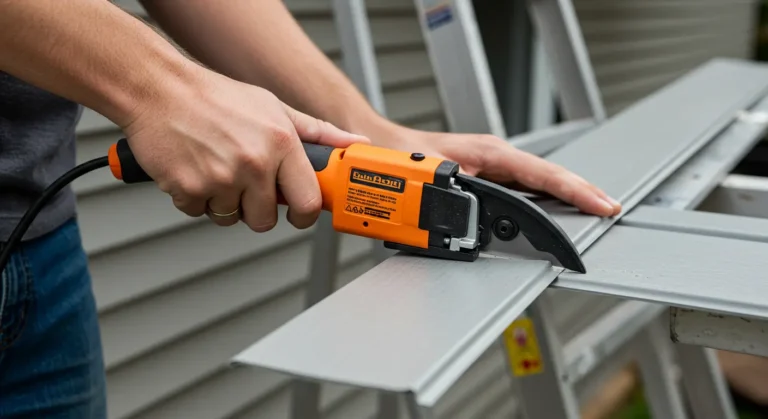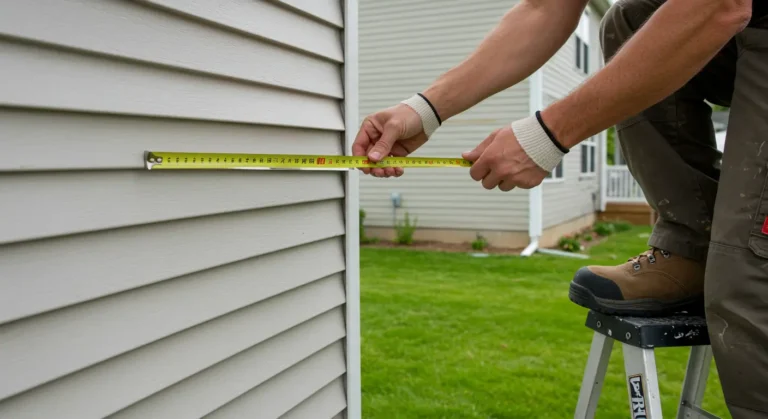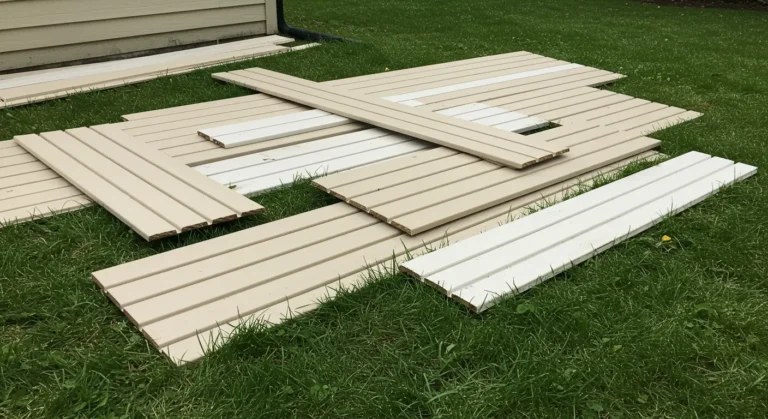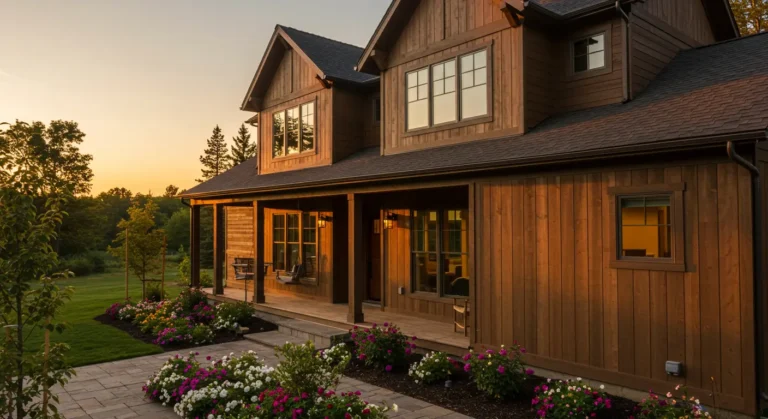Vinyl siding is a durable, low-maintenance option for protecting and beautifying your home’s exterior, but to get the best results, each panel must be cut precisely and safely. Whether you’re tackling a small repair or installing new siding across your home, cutting vinyl siding is a manageable DIY task if you have the right tools, techniques, and a few pro tips up your sleeve.
In this guide, we’ll walk you through everything you need to know about how to cut vinyl siding without cracking, chipping, or damaging it, including which tools to use, how to make different types of cuts, and when it’s time to call in a pro.
1. What Tools Do You Need to Cut Vinyl Siding?
Before making any cuts, it’s important to gather the right tools. The best tool to cut vinyl siding often depends on the type of cut you’re making.
Here are the essentials:
- Utility knife – Great for scoring and snapping short horizontal cuts.
- Tin snips – Perfect for small vertical cuts and notching around windows and outlets.
- Circular saw (with fine-tooth blade) – Ideal for making multiple cuts quickly, especially in large projects.
- Scoring tool – Designed to help you make accurate, repeatable scores on siding panels.
- Safety gear – Always wear goggles and gloves to protect yourself from sharp edges and flying debris.
Explore more tools for vinyl siding →
2. Cutting Techniques for Different Siding Cuts
Different parts of your project will call for different cutting methods. Here’s how to tackle each one:
Horizontal Cuts (Lengthwise)
Use a utility knife or scoring tool:
- Place the siding face-up on a flat surface.
- Score the siding along a straight edge with firm, even pressure.
- Bend the siding back and forth along the scored line until it snaps cleanly.
Pro Tip: Use a straightedge or square to keep cuts precise.
Vertical Cuts (Straight Cuts)
Use tin snips or a circular saw:
- Mark the line with a pencil.
- For tin snips: Cut slowly and carefully, keeping the blades aligned.
- For saws: Use a fine-tooth plywood blade and feed the siding slowly to avoid cracking.
Notches for Windows and Doors
Use a combination of a utility knife and tin snips:
- Score the outline of the notch.
- Use snips to cut into the corners and remove the cutout cleanly.
3. Best Tools for Each Type of Cut
Here’s a quick comparison of common tools used when cutting vinyl siding:
| Tool | Best For | Pros | Cons |
| Utility Knife | Scoring and snapping straight cuts | Inexpensive, no power needed | Requires multiple passes, slow |
| Tin Snips | Small vertical cuts and notching | Precise, easy to control | Not ideal for long cuts |
| Circular Saw | Long or bulk cuts | Fast and efficient | Can melt or chip siding if used incorrectly |
| Scoring Tool | Clean, repeatable scoring | Designed for siding | May not handle tight corners |
Looking to install vinyl siding yourself? Check out our guide to siding installation.
4. Common Mistakes to Avoid
Avoiding these rookie errors can save you time, money, and frustration:
- Cutting in cold temperatures – Vinyl becomes brittle and more likely to crack.
- Using the wrong blade – Avoid coarse blades that can chip or melt the siding.
- Applying too much pressure – Especially with utility knives, which can slip or overcut.
- Failing to measure twice – Inaccurate cuts mean wasted panels.
5. Safety Tips When Cutting Vinyl Siding
Working with sharp tools and rigid materials requires caution. Always follow these safety guidelines:
- Wear protective goggles and gloves
- Secure the siding on a stable surface before cutting
- Keep fingers and cords clear of saw blades
- Cut in a well-lit, ventilated area
- Unplug power tools when changing blades
6. When to Call a Professional
While DIY vinyl siding installation is possible, some situations call for an expert:
- You’re not confident in your measuring and cutting accuracy.
- The siding damage involves large sections or affects structural elements.
- You need to match existing siding styles or colors.
- Your cuts need to align around complex trim, corners, or uneven surfaces.
Need help with your project? Book a free siding inspection today to get professional guidance and a quote from the experts at Lone Wolf Siding.
7. DIY Vinyl Siding Installation: Where Cutting Fits Into the Process
If you’re planning a DIY vinyl siding installation, knowing how and when to cut each panel is critical to achieving a polished, professional finish. Cutting typically happens after measuring and marking the siding layout, just before securing panels to your wall. Whether you’re trimming pieces for corners, windows, or end-of-wall sections, precision cuts are key to ensuring a tight, weather-resistant fit.
Before starting your DIY project, take time to practice a few test cuts with leftover siding. This will help you get comfortable with the tools and techniques and avoid costly mistakes on your final panels.
Conclusion
Cutting vinyl siding may seem intimidating at first, but with the right tools and methods, it’s a beginner-friendly task that can help you save money and achieve a polished, professional look. Always remember to cut carefully, work safely, and avoid common mistakes and when in doubt, don’t hesitate to reach out for expert support.
Need help fixing damaged siding? Learn how to repair vinyl siding in our full guide.
FAQs
What is the easiest way to cut vinyl siding?
Using a utility knife to score and snap the siding is the simplest method for horizontal cuts. It’s clean, quiet, and doesn’t require power tools.
Can you use a utility knife to cut vinyl siding?
Yes, especially for lengthwise cuts. Just make several firm passes along a straight edge, then bend and snap the panel.
How do you avoid cracking when cutting vinyl?
- Cut in warm temperatures to reduce brittleness.
- Use sharp blades.
- Avoid pressing too hard.
- Support the panel fully when cutting.
Do you need to remove old siding before cutting new pieces?
Not necessarily. You can cut new siding for patch repairs without removing old panels, but for full replacements, old siding should be removed to ensure proper installation.
Need expert advice or hands-on help? Book a free siding inspection and let the professionals handle your next exterior renovation with precision.




